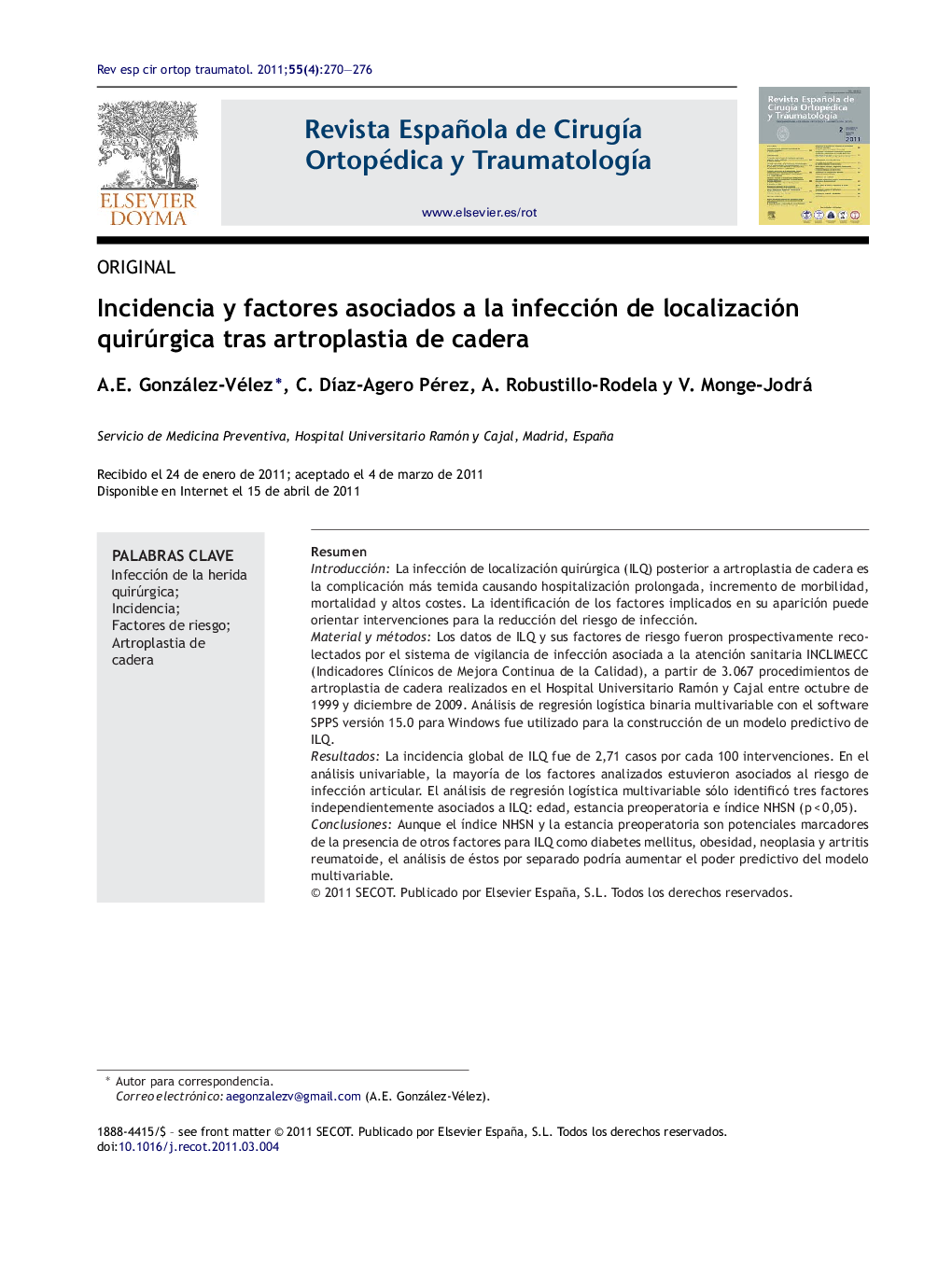| Article ID | Journal | Published Year | Pages | File Type |
|---|---|---|---|---|
| 4086612 | Revista Española de Cirugía Ortopédica y Traumatología | 2011 | 7 Pages |
ResumenIntroducciónLa infección de localización quirúrgica (ILQ) posterior a artroplastia de cadera es la complicación más temida causando hospitalización prolongada, incremento de morbilidad, mortalidad y altos costes. La identificación de los factores implicados en su aparición puede orientar intervenciones para la reducción del riesgo de infección.Material y métodosLos datos de ILQ y sus factores de riesgo fueron prospectivamente recolectados por el sistema de vigilancia de infección asociada a la atención sanitaria INCLIMECC (Indicadores Clínicos de Mejora Continua de la Calidad), a partir de 3.067 procedimientos de artroplastia de cadera realizados en el Hospital Universitario Ramón y Cajal entre octubre de 1999 y diciembre de 2009. Análisis de regresión logística binaria multivariable con el software SPPS versión 15.0 para Windows fue utilizado para la construcción de un modelo predictivo de ILQ.ResultadosLa incidencia global de ILQ fue de 2,71 casos por cada 100 intervenciones. En el análisis univariable, la mayoría de los factores analizados estuvieron asociados al riesgo de infección articular. El análisis de regresión logística multivariable sólo identificó tres factores independientemente asociados a ILQ: edad, estancia preoperatoria e índice NHSN (p < 0,05).ConclusionesAunque el índice NHSN y la estancia preoperatoria son potenciales marcadores de la presencia de otros factores para ILQ como diabetes mellitus, obesidad, neoplasia y artritis reumatoide, el análisis de éstos por separado podría aumentar el poder predictivo del modelo multivariable.
IntroductionProsthetic joint infection after hip arthroplasty is the most feared complication and is responsible for prolonged hospitalisation and an increased risk of morbidity and mortality. To identify the factors involved in its onset may lead to interventions to reduce the risk of infection.Material and methodsWe prospectively reviewed data collected from the health care infection surveillance system (INCLIMECC) on 3067 hip arthroplasties undertaken in the Ramon y Cajal University Hospital between October 1999 and December 2009. Multivariate analysis was performed using logistic binary regression to create mathematical models to predict joint infection after hip arthroplasty.ResultsThe overall incidence of joint infection after hip arthroplasty was 2.71%. Unadjusted univariate analysis showed multiple variables associated with joint infection. After multivariable logistic regression analysis, we found the following independent predictors: age, days of hospitalisation prior to the intervention and risk index of the National Healthcare Safety Network (NHSN) (p < .05).ConclusionsNHSN risk index and the days of hospitalisation prior to the intervention are associated to other risk factor of joint infection after hip arthroplasty, such as Diabetes Mellitus, obesity and rheumatoid arthritis. Nevertheless is important to analyse these factors separately to increase the predictive power of the multivariate model.
